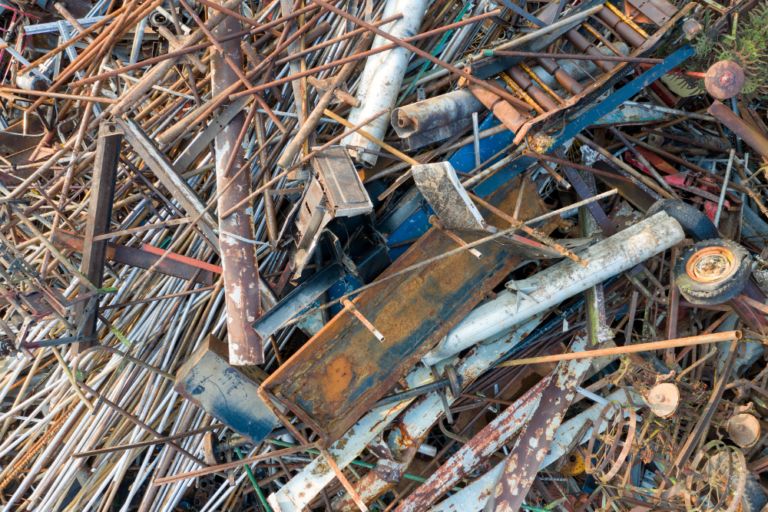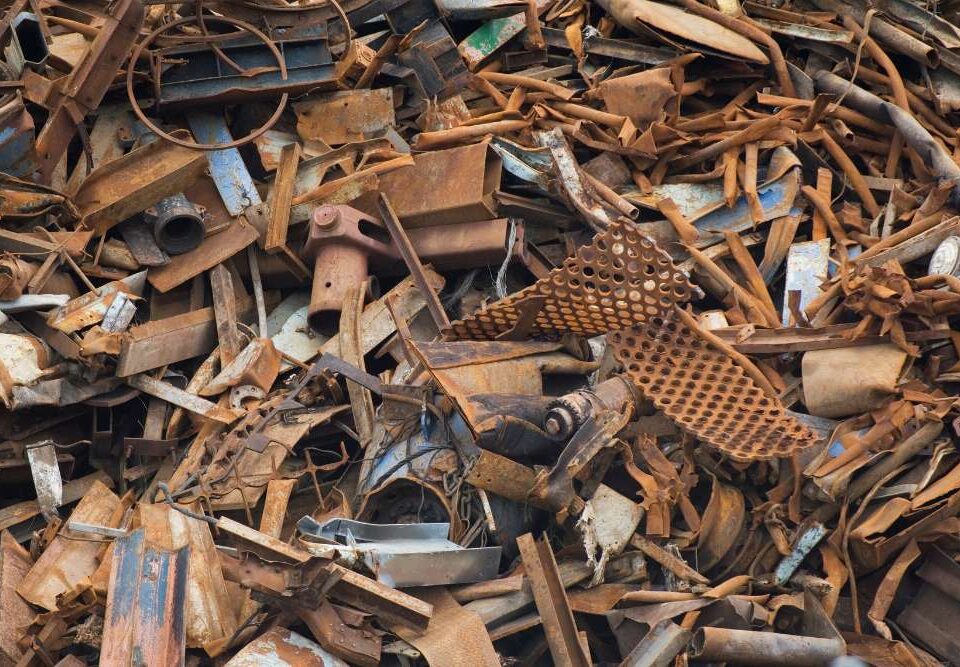
How Junk Removal Improves Commercial Property Value
August 28, 2025
What to Do with Excess Junk in Your Retail Store
August 28, 2025Tips for Efficient Junk Removal in Restaurants and Cafes
Keep Back-of-House Areas Organized to Prevent Clutter
Restaurants and cafes generate a constant flow of waste from food packaging, kitchen equipment, and old furnishings. Maintaining organized back-of-house areas helps prevent clutter from accumulating, making junk removal a smoother process. Clear pathways and designated storage zones ensure that unwanted items can be quickly identified and removed without disrupting daily operations. Using labeled bins for recycling, compostable materials, and general waste encourages staff to sort properly, reducing the volume of items that need professional removal. Regularly inspecting storage areas and kitchens can catch unnecessary items before they become a larger problem, saving both time and effort when arranging for removal services.
Organizing these spaces also promotes a safer environment for staff and improves overall workflow efficiency. When junk is minimized, there is less risk of accidents, and employees can focus on their primary tasks. Establishing a routine schedule for clearing out unused or broken equipment ensures that spaces remain functional and inviting. This proactive approach reduces stress associated with last-minute cleanups and allows the restaurant to operate smoothly while maintaining a professional appearance for staff and patrons alike.
Schedule Regular Pickups to Maintain a Clean Environment
Scheduling regular junk removal pickups can prevent clutter from becoming overwhelming in busy dining establishments. Predictable collection routines ensure that waste, old appliances, and other unwanted materials are removed promptly, keeping the restaurant or cafe environment clean and welcoming. Consistency in scheduling allows management to plan for staff availability, ensuring the process is efficient and non-disruptive to daily service. It also helps avoid the temptation to store items indefinitely, which can lead to congestion and reduced operational efficiency over time.
Moreover, regular pickups can help identify recurring sources of waste that may require more strategic handling. By analyzing what is frequently removed, restaurant owners can implement smarter purchasing decisions, reduce unnecessary surplus, and streamline storage practices. This not only improves the aesthetic and sanitary conditions but also contributes to sustainability by facilitating recycling and proper disposal of materials, ultimately supporting both operational and environmental goals.
Separate Waste by Type to Streamline Removal
Dividing waste into categories such as recyclables, compostables, and general junk enhances the efficiency of removal services. When staff separates items at the source, professionals can process each type more quickly, minimizing time spent sorting on-site. Clear labeling of bins and designated areas for different waste types reduces confusion, speeds up the removal process, and prevents cross-contamination. Restaurants and cafes often deal with a mix of materials, from food scraps and packaging to broken furniture and kitchen appliances, making proper segregation essential for smooth operations.
This method also supports sustainability and compliance with local regulations regarding waste disposal. By keeping materials organized and separated, restaurants can take advantage of recycling and donation opportunities for items like furniture and equipment that are still in usable condition. Staff training in waste separation ensures consistency, creating a culture of responsibility and awareness that benefits both operational efficiency and community impact.

Implement a Rotation System for Old Equipment
Rotating older or seldom-used equipment helps prevent accumulation of unnecessary items in kitchens and storage areas. By systematically reviewing inventory, restaurant owners can identify items that are no longer functional or required for daily operations. Setting aside these items for removal before they become clutter ensures that spaces remain manageable and accessible. A rotation system also encourages better utilization of existing resources, reducing the need for excessive storage and making junk removal more predictable and organized.
Implementing this system involves scheduling periodic reviews of all kitchen tools, appliances, and furnishings. Staff can quickly identify what is essential and what has become obsolete, allowing removal teams to handle only items that are genuinely redundant. This practice improves operational efficiency by freeing up valuable space, reducing fire hazards, and maintaining a more visually appealing environment. Ultimately, it creates a streamlined workflow that balances functionality with cleanliness, promoting a professional atmosphere.
Use Temporary Storage Solutions for Staging Junk
Temporary storage units or designated staging areas can facilitate smoother junk removal in restaurants and cafes. Items scheduled for removal can be gathered in one central location, preventing clutter from spreading across kitchens, dining areas, and storage rooms. This staging approach allows staff to maintain a clean environment during service hours, ensuring that removal does not interfere with daily operations. It also provides removal teams with easier access, reducing time spent moving items from various locations and improving overall efficiency.
Staging areas also enable prioritization of junk removal based on urgency or type. Fragile items, hazardous materials, or bulky equipment can be handled appropriately without disrupting workflow. By preparing items for collection in a controlled manner, restaurants can coordinate with removal services to optimize timing and logistics. This method minimizes operational interruptions while keeping spaces organized, safe, and presentable for both staff and patrons.
Train Staff on Proper Disposal Practices
Staff training is essential for maintaining an efficient junk removal process. Employees who understand proper disposal practices can quickly and correctly sort materials, reducing the risk of contamination and ensuring compliance with local regulations. Training programs can cover waste categorization, recycling procedures, and safe handling of bulky or hazardous items. Well-informed staff contribute to smoother, faster removal operations and help prevent mistakes that could result in delays or additional costs.
In addition to efficiency, training empowers employees to take ownership of cleanliness and organization. A team knowledgeable about disposal practices can identify potential issues early, address them proactively, and maintain high standards of hygiene. Clear communication and consistent procedures foster accountability, ensuring that junk removal becomes a natural part of daily operations rather than a disruptive task. Over time, this approach cultivates a culture of responsibility and professionalism that benefits the entire establishment.
Coordinate with Professional Removal Services
Engaging professional junk removal services provides restaurants and cafes with reliable and efficient waste management solutions. Professionals bring experience, equipment, and manpower to handle items that may be difficult or unsafe for staff to remove. Coordinating schedules ensures minimal disruption to restaurant operations and allows management to plan around service times for optimal workflow. Professionals also ensure proper disposal, recycling, or donation of items, helping establishments adhere to regulations and sustainability practices.
Working with experts reduces the stress of managing bulky or hazardous waste, allowing staff to focus on core responsibilities. It also provides access to efficient and systematic methods for clearing out large quantities of junk quickly. Collaboration with removal services enhances overall operational efficiency and cleanliness, ensuring that spaces remain safe and functional while maintaining the professional image expected in hospitality settings.
Maintain a Consistent Cleaning Schedule
Consistency in cleaning and removal routines is critical for efficient waste management. Establishments that adhere to a regular schedule can prevent the buildup of debris and clutter, making junk removal more manageable and less disruptive. Daily or weekly inspections help identify items that need removal, ensuring that spaces remain organized and sanitary. A predictable cleaning schedule also promotes accountability among staff and reinforces the importance of a tidy environment.
Regular maintenance of clean and orderly areas supports a healthier workspace, reduces the risk of accidents, and improves staff morale. It also enhances the dining experience by creating an inviting atmosphere for customers. Consistency in cleaning routines enables restaurants and cafes to integrate junk removal seamlessly into their operations, ensuring that waste management is a routine part of daily practices rather than an occasional emergency.
Evaluate and Adjust Storage Layouts
Optimizing storage layouts can significantly impact junk management efficiency. Rearranging shelves, equipment, and storage zones to minimize wasted space helps prevent unnecessary accumulation of items. An effective layout allows staff to access necessary tools quickly while keeping obsolete or redundant items segregated for removal. Regular evaluation of storage areas ensures that changes in inventory or operations do not compromise organizational efficiency, supporting smoother junk removal over time.
Adjustments to layout can also incorporate flexible storage solutions, such as movable racks or modular shelving, to accommodate changes in volume or seasonal fluctuations. This proactive approach reduces congestion, improves workflow, and ensures that removal teams can operate without hindrance. A thoughtfully designed storage environment contributes to a cleaner, safer, and more efficient restaurant or cafe, enhancing both staff productivity and customer satisfaction.
Plan Ahead for Seasonal and Renovation Cleanouts
Restaurants and cafes often undergo seasonal menu changes or renovations that generate large amounts of junk. Planning ahead for these events allows management to coordinate removal services in advance, avoiding last-minute chaos. Identifying items that will become obsolete or surplus during seasonal updates ensures that removal can proceed smoothly, preventing clutter from impacting daily operations. Proper scheduling and preparation minimize disruption and streamline the cleanout process.
Proactive planning also provides opportunities for recycling and repurposing materials, supporting sustainability initiatives. By anticipating changes in inventory, equipment, and furnishings, establishments can create an organized approach to disposal that aligns with operational needs. Early coordination with junk removal services ensures that cleanouts are handled efficiently, freeing staff to focus on core tasks and maintaining a safe, clean, and professional environment throughout the transition period.
Conclusion
Efficient junk removal in restaurants and cafes is achievable with strategic planning, staff training, and regular coordination with professional services. Maintaining organized spaces, implementing rotation systems for equipment, and using temporary staging areas are essential steps to reduce clutter and improve workflow. Consistent cleaning routines and proper waste segregation further streamline the process, while proactive evaluation of storage layouts ensures long-term operational efficiency. By integrating these practices into daily operations, establishments can maintain a clean, safe, and productive environment that benefits staff and customers alike.
For restaurants and cafes seeking professional assistance, North Bay Junk Removal in Santa Rosa, CA provides reliable and thorough services tailored to commercial needs. Their team ensures that unwanted materials, from kitchen appliances to furniture, are efficiently removed and disposed of responsibly. With their expertise, establishments can minimize disruption, maintain high standards of cleanliness, and optimize space usage. Contact North Bay Junk Removal at 707-478-6817 to schedule a service and experience professional junk removal designed to keep your restaurant or cafe running smoothly.




